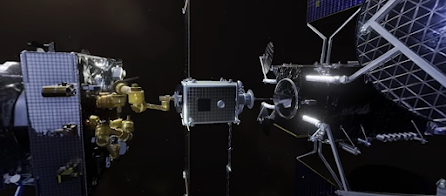High above the earth, there are thousands of satellites that circle the planet but once satellites are launched if something goes wrong how are they repaired what if they're running low on fuel for decades otherwise healthy satellites was retired to the depths of space until now the next generation of robotics in space is here preparing for its first servicing mission this revolutionary the system will change the satellite industry forever
building on our pioneering mission extension vehicle the mission robotic vehicle represents a groundbreaking advancement in a spacecraft capable of repairing relocating and even building in earth's orbit using the smaller mission extension pods this technology acts as a jet pack adding years of life to vital satellites the spacecraft start their journey to their first rescue mission 22 000 miles above the earth the mrv and mep rendezvous accurate to the centimeter the fully articulating robotic arms autonomously secure and stow the extension pod after traveling thousands of miles it approaches the satellite that has run low on fuel moving thousands of miles per hour the spacecraft is now within just inches of finishing its mission extending its arm and attaching the extension pod perfectly to the satellite.
The mrv fires its thrusters in preparation for its next mission, giving a dying satellite six additional years of life. Are you ready for your next mission? Thousands of miles above the earth, a customer's satellite with a partially deployed solar array requires assistance. As we approach the satellite, the mission robotic vehicle inspects the issue and operators on the ground assess the situation. Using its robotic arm, it carefully dislodges the array using its onboard camera to inspect for any damage after another successful mission, we continue to support even more satellites for years to come.




Comments
Post a Comment
IF YOU HAVE ANY DOUBT,PLEASE LET ME KNOW